Here are the steps to install Transdroid when you use Vuze on Windows:
Setting up Vuze
Vuze is a fairly popular torrent client with Windows users, most notably because of the extensive media converter and device playback features. To download the latest version, go to the official Vuze website and install it on your computer.
Note that you’ll have to use Vuze with Java 6, as the required XML over HTTP plugin in incompatible with Java 7 at the moment.
After starting Vuze from the Windows start menu, you should install the XML over HTTP plug-in. This forms the communication layer between Vuze and Transdroid. You can manually get the plug-in from the Vuze/Azureus website. In that case unzip the downloaded xml_http_if_1.1.4.zip file and place the contents in the C:\Program Files\Vuze\plugins directory.
An alternative is to install it directly from Vuze. Choose ‘Tools -> Plugins -> -> Installation Wizard’ and use the wizard to install the XML over HTTP plug-in.
When the plug-in is installed, go to ‘Tools -> Options..’ and open the ‘Plugins’ tab. Make sure that the XML over HTTP plug-in is enabled. It should now be possible to open this plug-in’s settings screen. This allows you to configure remote access. You can leave the port number to 6884. Make sure you set the mode to ‘full’ access and do not use IP filtering. Next, check the ‘Enable password‘ option and fill in a username and password of your choice. Click ‘Apply’ to confirm your settings.
You may want to open the XML over HTTP plug-in’s logging window using ‘Tools -> Plugins -> Log Views -> XML over HTTP’. This window shows some statistics and generates log messages when a connection is attempted.
Remember that you always leave the application running to allow Transdroid to connect to it.
Allow access from anywhere
The next step is very important if you want to use Transdroid to control Vuze from anywhere you go and not just your home Wi-Fi network. You will need to open up the port 6884 and redirect this to your home computer. First get your Window computer’s local IP address. Where you find this depends on your Windows version. On Windows Vista, left-click the Network Connection icon in your system tray, in the very bottom-right corner of your screen, and choose ‘Network and Sharing Center’.
Next, click on ‘View Status’ and then on the ‘Details’ button. This window shows you all the connection details for your active network adapter. You should note down the ‘IPv4 IP Address’. This is your local IP address that you will need to redirect any external traffic to.
An alternative on both Windows XP and Vista is to run the ipconfig.exe command. Hit ‘WindowsKey-R’ and in the ‘Run’ dialog box that pops up enter ‘cmd.exe’ and click ‘OK’. In the command window, enter ‘ipconfig.exe’ and look at it’s output. For the adapter that is active it should show you a IPv4 Address. This is the local IP address that you need to write down.
Now go to your the manager interface of your router or ADSL modem. It will most likely have a NAT tab or settings screen. Here you will need to set up a port forward from all external traffic on port number 6884 to you local computers’ IP address – the one that you just retrieved – on the same port. There are too many routers and ADSL modems to make detailed explanations here, but you can use the website PortForward for in-depth help.
Setting up Transdroid
The final step is to set up Transdroid. Install the software from the Android Market and open up the application. You will see a message that you need to set up a server configuration first. Hit your Android device’s menu button and choose ‘Settings’. Next, click the ‘Add a sever’ button to create your first sever configuration. You can add more later, if you need to.
Now fill in all the settings. The name is totally up to you. From the type menu you choose for Vuze of course.
The IP address is your server’s external IP address. If you do not know this, open up a browser on your Windows machine and surf to whatismyip.com. It will present you the external IP address that you need in Transdroid.
The port number is the next setting and is 6884. (Except for when you choose to use something else, of course.)
Choose to enable authentication and fill in the XML over HTTP username and password.
Time to test your settings! First disconnect from the Wi-Fi network if you are connected to the local network (the one where your Windows machine is in as well). This is important, because you will need to use different settings for that.
Now, hit the back button of your Android device twice to return to the main screen. It should now state that it is connecting to the sever. After a couple of seconds you should get a listing of all the active torrents in Vuze. Reward yourself by downloading some torrents, right from your phone. 🙂
Local Wi-Fi network access
One thing you should know when you have a Wi-Fi network at home, is that you cannot use your external IP address as described above while you are connected this way. When connected to the wireless network that your Windows machine is in, you will need to use your machine’s internal IP address instead.
Easiest thing to do is to open Transdroid’s settings menu again and add a new sever configuration. Use the exact same details that you used before, but now use your Windows machine’s local IP address. Of course you also want to give it a name that identifies it as being your local configuration.
Give it a test by going to the main screen and choose ‘servers‘ from the menu. You can select the other configuration from the pop-up menu. A little tip: switching servers can also be done by swiping your finger from left to right (or the other way around). No need to open the menu each time!
Troubleshooting
If Transdroid refuses to connect you, use these steps to trace the problem.
Make sure that the XML over HTTP plug-in is running. You can open a logging window for the plg-in that should show any connection attempts.
Check if you can connect using Transdroid while connected on your internal Wi-Fi network. Remember to use you internal IP address now. If this works but external connections via 3G/EDGE don’t, you have not set up the port forwarding correctly.
Still having troubles? Send us an e-mail explaining what you have attempted already, what error you are receiving and which torrent client you use.
Good luck and enjoy!
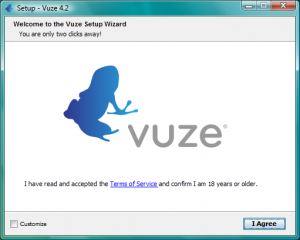
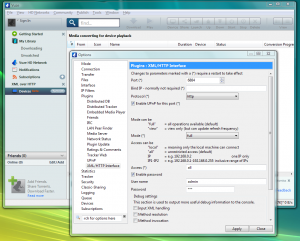
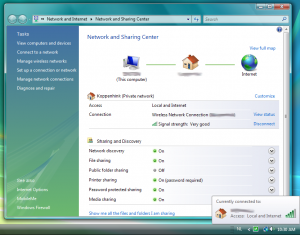
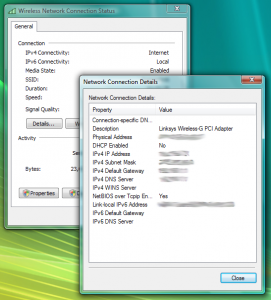
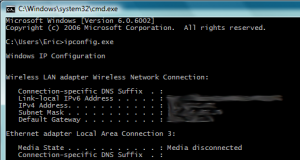
Great App! Having some problems downloading from phone to home computer. says that the option is unavaliable at this time.Any thoughts
The adding of torrent via links should work just fine, but indeed the uploading of .torrent files form your phone to the torrent client isn’t supported yet.
Got the program to work the first day, but after that i keep getting the same message when i try to log on: ‘error during communication with server.’
i went over everything several times and i can’t seem to figure it out.
Mykel, please check if your local IP address didn’t change. This may happen when youuse DHCP (usually yhe case) instead of a static IP. If so, you also need to update your port forwarding.
You may also send me an error report using Transdroid (item is in the menu).
Thanks for getting back with me Eric!
I had noticed my IP address had changed and i took care of that. But it still doesn’t run. I tried checking the xml over http log, but nothing is there although it says it is running. Could that be the problem?
If the log is empty but the plugin is running, then apparently Transdroid cannot connect to you server any more. Can you mail me you error log? Also you may try to reset your username and password in both Vuze and Transdroid.
The XML over HTTP plugin keeps changing the password in Vuze from 6 digits to 3. Everything works fine for a few hours then I have to go back in and change the password to match the phone’s settings. Not so much a problem with Transdroid as it is with the plugin.
mykel i was having the same problem as you until i binded my phones ip address to vuze
i assume you need to be in signal if your not using your local wireless? also wil it work using other wireless connections?
Well, it’s just that you need a connection to your phone, either via some 3G/EDGE conenction or via some other way like wifi. Just remember you will only use your internal IP address if you are connected to your local wifi network.
Eric, would you be able to email me to provide support. I have tried for over a week to attempt to get this working and have had no success. The XML over HTTP plug in is running. I am using a domain name with no-ip(along with there app which keeps the sub domain pointing to my ever changing IP. I have a static IP set up. I have followed the guide at no-ip:
https://www.no-ip.com/support/guides/routers/dynamic-dns-on-dd-wrt.html
My modem is bridged. My port is forwarded in my router and firewall. No matter what Transdroid fails to connect. Would you email me to assist me as I fear this may be a long winded troubleshooting processes.
On a side note, have you considered opening a forum for users to get help with? It would be more efficient then a blog.
its not wokring for me
here is the log
”
REQUEST START: 192.168.2.102, time: 6:18:24 PM
[18:18:24] About to deserialise the RPRequest
[18:18:24] Beginning deserialisation of RPRequest instance.
[18:18:24] Deserialising field (“object”, type: RPObject)
[18:18:24] About to see if there is an object reference to process.
[18:18:24] Found object ID node, processing…
[18:18:24] Found object (type required was RPObject, so we don’t need to unwrap the value).
[18:18:24] Field “object” deserialised and set.
[18:18:24] Deserialising field (“method”, type: String)
[18:18:24] Attempting to deserialise simple value of type “String”
[18:18:24] Deserialisation of simple value successful.
[18:18:24] Field “method” deserialised and set.
[18:18:24] Deserialising field (“connection_id”, type: long)
[18:18:24] Attempting to deserialise simple value of type “long”
[18:18:24] Deserialisation of simple value successful.
[18:18:24] Field “connection_id” deserialised and set.
[18:18:24] Deserialising field (“request_id”, type: long)
[18:18:24] Attempting to deserialise simple value of type “long”
[18:18:24] Deserialisation of simple value successful.
[18:18:24] Field “request_id” deserialised and set.
[18:18:24] REQUEST: method=getDownloads, object=GenericRPObject [for DownloadManagerImpl]@1521956
[18:18:24] About to serialise the RPReply
[18:18:24] RESPONSE: value=[Lcom.aelitis.azureus.plugins.xmlhttp.GenericRPObject;@1d4efe6, type=GenericRPObject[4]@1d4efe6
[18:18:24] Serialising object of type “GenericRPObject[]”
[18:18:24] Object is array type – processing 4 item(s).
[18:18:24] Serialising object of type “GenericRPObject”
[18:18:24] Need to use XMLSerialisationUtils to serialise GenericRPObject@18ca748
[18:18:24] Serialising object of type “NoSuchMethodError”
[18:18:24] Need to use XMLSerialisationUtils to serialise NoSuchMethodError@10018c0
[18:18:24] Going to process 0 attributes on NoSuchMethodError@10018c0
[18:18:24] Finished serialising NoSuchMethodError@10018c0
REQUEST END
“
Please help me out erik, I can’t for the life of me figure out why this isn’t working, I have done EXACTLY as the instructions above said and I finally got a response from the computer using port 6884 instead of 7011 (which i was planning to use so I could work both my desktop and laptop clients from my phone (Motorola Droid w/ android 2.1) ) here is the log that comes up on Vuze:
REQUEST START: 192.168.1.18, time: 12:10:31 AM
[0:10:31] About to deserialise the RPRequest
[0:10:31] Beginning deserialisation of RPRequest instance.
[0:10:31] Deserialising field (“object”, type: RPObject)
[0:10:31] About to see if there is an object reference to process.
[0:10:31] Found object ID node, processing…
[0:10:31] Found object (type required was RPObject, so we don’t need to unwrap the value).
[0:10:31] Field “object” deserialised and set.
[0:10:31] Deserialising field (“method”, type: String)
[0:10:31] Attempting to deserialise simple value of type “String”
[0:10:31] Deserialisation of simple value successful.
[0:10:31] Field “method” deserialised and set.
[0:10:31] Deserialising field (“connection_id”, type: long)
[0:10:31] Attempting to deserialise simple value of type “long”
[0:10:31] Deserialisation of simple value successful.
[0:10:31] Field “connection_id” deserialised and set.
[0:10:31] Deserialising field (“request_id”, type: long)
[0:10:31] Attempting to deserialise simple value of type “long”
[0:10:31] Deserialisation of simple value successful.
[0:10:31] Field “request_id” deserialised and set.
[0:10:31] REQUEST: method=getDownloads, object=GenericRPObject [for DownloadManagerImpl]@621ef0
[0:10:31] About to serialise the RPReply
[0:10:31] RPException occurred – possibly occurred during the method invocation
org.gudy.azureus2.pluginsimpl.remote.rpexceptions.RPMethodAccessDeniedException: Access Denied
at org.gudy.azureus2.ui.webplugin.WebPluginAccessController.checkAccess(WebPluginAccessController.java:137)
at org.gudy.azureus2.pluginsimpl.remote.RPRequestHandler.processRequestSupport(RPRequestHandler.java:138)
at org.gudy.azureus2.pluginsimpl.remote.RPRequestHandler.processRequest(RPRequestHandler.java:75)
at com.aelitis.azureus.plugins.xmlhttp.XMLRequestProcessor2.process(XMLRequestProcessor2.java:124)
at com.aelitis.azureus.plugins.xmlhttp.XMLRequestProcessor2.(XMLRequestProcessor2.java:83)
at com.aelitis.azureus.plugins.xmlhttp.XMLHTTPServerPlugin.generateSupport(XMLHTTPServerPlugin.java:220)
at org.gudy.azureus2.ui.webplugin.WebPlugin.generate(WebPlugin.java:1911)
at org.gudy.azureus2.pluginsimpl.local.tracker.TrackerWCHelper$1.run(TrackerWCHelper.java:111)
at org.gudy.azureus2.pluginsimpl.local.tracker.TrackerWCHelper$1.run(TrackerWCHelper.java:83)
at org.gudy.azureus2.pluginsimpl.local.utils.UtilitiesImpl.callWithPluginThreadContext(UtilitiesImpl.java:988)
at org.gudy.azureus2.pluginsimpl.local.tracker.TrackerWCHelper.handleExternalRequest(TrackerWCHelper.java:80)
at org.gudy.azureus2.core3.tracker.server.impl.tcp.TRTrackerServerTCP.handleExternalRequest(TRTrackerServerTCP.java:399)
at org.gudy.azureus2.core3.tracker.server.impl.tcp.TRTrackerServerProcessorTCP.handleExternalRequest(TRTrackerServerProcessorTCP.java:961)
at org.gudy.azureus2.core3.tracker.server.impl.tcp.TRTrackerServerProcessorTCP.processRequest(TRTrackerServerProcessorTCP.java:184)
at org.gudy.azureus2.core3.tracker.server.impl.tcp.blocking.TRBlockingServerProcessor.runSupport(TRBlockingServerProcessor.java:350)
at org.gudy.azureus2.core3.util.AERunnable.run(AERunnable.java:38)
at org.gudy.azureus2.core3.util.ThreadPool.runIt(ThreadPool.java:321)
at org.gudy.azureus2.core3.util.ThreadPool$threadPoolWorker.run(ThreadPool.java:634)
at org.gudy.azureus2.core3.util.AEThread2$threadWrapper.run(AEThread2.java:299)
[0:10:31] RESPONSE (ERROR): org.gudy.azureus2.pluginsimpl.remote.rpexceptions.RPMethodAccessDeniedException: Access Denied
[0:10:31] Serialising object of type “RPMethodAccessDeniedException”
[0:10:31] Need to use XMLSerialisationUtils to serialise RPMethodAccessDeniedException@64d25b
[0:10:31] Going to process 0 attributes on RPMethodAccessDeniedException@64d25b
[0:10:31] Finished serialising RPMethodAccessDeniedException@64d25b
REQUEST END
Please e-mail me wether you can help or not and let me know what I can try if anything comes to mind. Thanks.
You are receiving an access denied error so either your username/password is incorrect or you’ve blocked access with the IP filter.
I don’t understand where to start. (Samsung Moment)
I suggest you first understand what torrents are and how Vuze works. Next, you may start at the beginning of this install guide. Good luck.